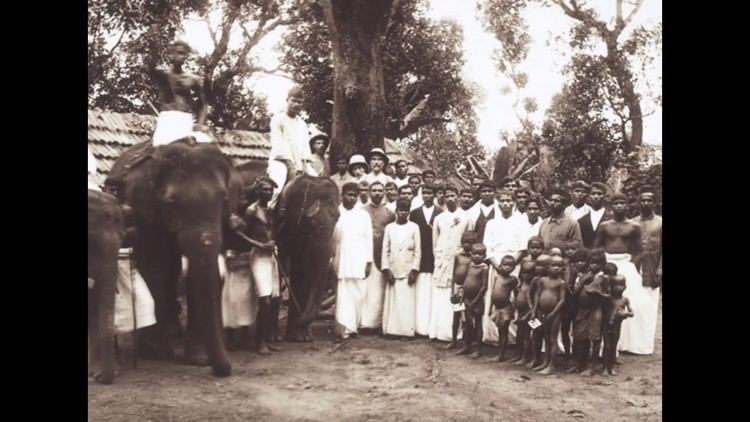1792–1957 →
→
→ Capital Kozhikode | 1901 2,800,555 | |
 | ||
1901 15,009 km (5,795 sq mi) | ||
Mahoney for malabar district 2
Malabar District was an administrative district of Madras Presidency in British India and independent India's Madras State. The British district included the present-day districts of Kannur, Kozhikode, Wayanad, Malappuram, Palakkad (excluding the Alathur and Chittur Taluks), and Chavakad Taluk of Thrissur District (former part of Ponnani Taluk) in the northern part of Kerala state. The district lay between the Arabian Sea on the west, South Canara District on the north, the Western Ghats to the east, and the princely state of Cochin to the south. The district covered an area of 15,009 square kilometres (5,795 sq mi), and extended 233 km (145 mi) along the coast and 40–120 kilometers (25–75 miles) inland. The name Mala-bar means the "hill country". Kozhikode is considered as the capital of Malabar.
Contents
- Mahoney for malabar district 2
- Ag malabar district ca camp2012 last session chaitanya gera
- History
- Geography
- Taluks
- Modern day Taluks in erstwhile Malabar
- Representatives from Malabar to Madras State
- Cuisine
- References
Ag malabar district ca camp2012 last session chaitanya gera
History
Most of Malabar District was included among the territories ceded to the British East India Company in 1792 by Tipu Sultan of Mysore at the conclusion of the Third Anglo-Mysore War; Wayanad was ceded in 1799 at the conclusion of the Fourth Anglo-Mysore War. The region was organized into a district of Madras Presidency. The administrative headquarters were at Calicut (Kozhikode). After Indian independence, Madras Presidency was reorganized into Madras state, which was divided along linguistic lines on November 1, 1956, when Malabar District was merged with erstwhile Kasaragod Taluk immediately to the north and the state of Travancore-Cochin to the south to form the state of Kerala. Malabar District was divided into the three districts of Kozhikode, Palakkad, and Kannur on January 1, 1957. Malappuram District was created from parts of Kozhikode and Palakkad in 1969, and Wayanad District was created in 1980 from parts of Kozhikode and Kannur.
The name Malabar was not in general use until the arrival of the Europeans. The word is most probably the fusion of the Persian Mālā (goods) and bār (coast) westernized into bar to mean the trade or commodity coast.
Geography
The district was widely scattered and consists of the following parts:-
Taluks
Modern day Taluks in erstwhile Malabar
Kannur District
- Taliparamba
- Kannur
- Thalassery
- Iritty
Wayanad District
- Mananthavady
- Sulthan Bathery
- Vythiri (Kalpetta)
Kozhikode District
- Vatakara
- Koyilandy
- Kozhikode
- Thamarassery
Malappuram District
- Tirurangadi
- Eranad (Manjeri)
- Nilambur
- Perinthalmanna
- Tirur
- Ponnani
Palakkad District
- Mannarkkad
- Ottappalam
- Palakkad
- Pattambi
Thrissur District
- Chavakkad
Note: Kasaragod and Hosdurg taluks in Kasaragod district are sometimes considered as part of Malabar region, however not part of erstwhile Malabar district. They were a part of South Kanara district with the taluk headquarters at Kasaragod.
Representatives from Malabar to Madras State
Cuisine
The Malabar cuisine depicts it culture and heritage. It is famous for Malabar biriyani. The city is also famous for Haluva called as Sweet Meat by Europeans due to the texture of the sweet. Kozhikode has a main road in the town named Mittai Theruvu (Sweet Meat Street, or S.M. Street for short). It derived this name from the numerous haluva stores which used to dot the street.
Another speciality is banana chips, which are made crisp and wafer-thin. Other popular dishes include seafood preparations (prawns, mussels, mackerel) . Vegetarian fare includes the sadya.
However, the newer generation is more inclined towards to Chinese and American food. Chinese food is very popular among the locals.
